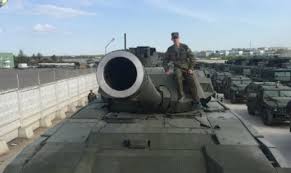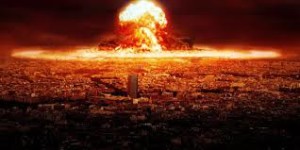
In the modern world, minerals, land and other natural resources are gradually losing their value while knowledge and technologies are steadily gaining in importance. There are many examples that prove this point such as the Uber app that put the company that had created it at the top of the 2015 list of companies with the highest rates of market capitalization growth, leaving far behind both Russia’s “national treasure” Gazprom and the Kremlin’s “pride” Rosneft. Elon Musk launches reusable spacecrafts, and even Roman Abramovich invests money in the advanced US and Israeli apps Via and BlindSpot.
It is no surprise though that the same cannot be found Russia. Domestic manufacturers have almost nothing to boast about on high-tech markets, except for tight oil pipeline valves the potential demand for which is far from being obvious. The state-owned corporation Rusnano that was established in 2007 specifically for the purpose of boosting the development of high technologies, has been deeply unprofitable since the very beginning.
Dedicated patriots who are “getting up from their knees” could object to the previous statement, and reinforce their argument by mentioning certain achievements in the development of military equipment. Russia’s innovative Armata tank, the Su-35 fighter, the Bulava missile and other “Iskanders” are staples of Russian state-run TV channels, especially in the context of the militarist frenzy that hit the country after the annexation of Crimea, support for pro-Russian separatists in Donbass and bombing raids in Syria.
However, all the aforementioned military equipment is only seemingly new and innovative. When one gets down to it, it turns out that, although considerably upgraded, Su-35 is but a new version of the Su-27 that was built in the Soviet Union in 1977. The Su-35 is a fourth-generation fighter while the fifth-generation F-22A produced by the United States has been operational for more than a decade, and yet another US combat aircraft F-35 has been under full-scale testing since 2012. The testing of the Russian analogue of a fifth-generation fighter, PAK-FA or T-50, has only begun. Only 8 such fighters have been built and their expected cost will reach $100 million each.
The situation with the Armata tank does not look much better. Although expert opinions diverge as to how innovative the new technical specifications of the tank are due to the fact that these remain classified, most experts believe that the only difference between the Soviet T-80 and the new-age Armata is its shape and a bigger turret. The price of the new model, however, amounting to around $6-7 million, is comparable to that of combat aircrafts supplied to the Russian army by the country’s military industrial complex and exceeds the price of their foreign analogues almost twofold. Considering that tanks’ importance in a modern war has diminished and defense spending has been frozen due to Russia’s current budget deficit, the plans to make 2,300 Armata tanks operational before 2020 look unrealistic.
The so-called new Bulava ballistic missile has been under development for almost 20 years and has been undergoing test launches for the last 10 years with less than half of launches considered successful. It is worth noting that even the Chief of the General Staff of the Armed Forces of the Russian Federation links failed Bulava tests to the poor quality of assembly process. Considering that one such missile costs 1 billion rubles (around $15.5 million), every failed test is an inexcusable luxury that Russian taxpayers pay dearly for. According to experts, this Russian “tsar missile” is inferior even to the 1989 US Trident II missile that has already been removed from operational use.

There seems to be no other Russian high-tech “achievements”. Specialists note that the country is falling considerably behind not only the “decaying” West but also other BRICS members both in the quality of its scientific research and its innovative potential. It is impossible to catch up with the rest of the world just by blowing the Defense Ministry’s budget yearly. Russia’s development of “advanced” weapons proves this point. Endless test launches of the Bulava missile and a mass production of Armata tanks can serve to further enrich Putin’s friends such as head of Rostechnology military-industrial corporation Sergei Chemezov at the price of road building, development of passenger transport, healthcare, education and other socially important budget expenditures. Russian citizens can take it. What is important is to win the war. It does not matter whom Russia is at war with since the country is clearly surrounded by enemies. Now is not the time to think about innovations and new technologies. Our tanks, however, need to be fully operational for a military campaign against Kyiv and Tallinn, and our missiles have to be ready to reduce the United States to nuclear dust.
Rumor says that under Putin, drinking has become unfashionable in Kremlin, and no one falls asleep face down in one’s food during official government receptions anymore. Russian officials must have switched to some secret innovative type of doping, developed specifically for them.





